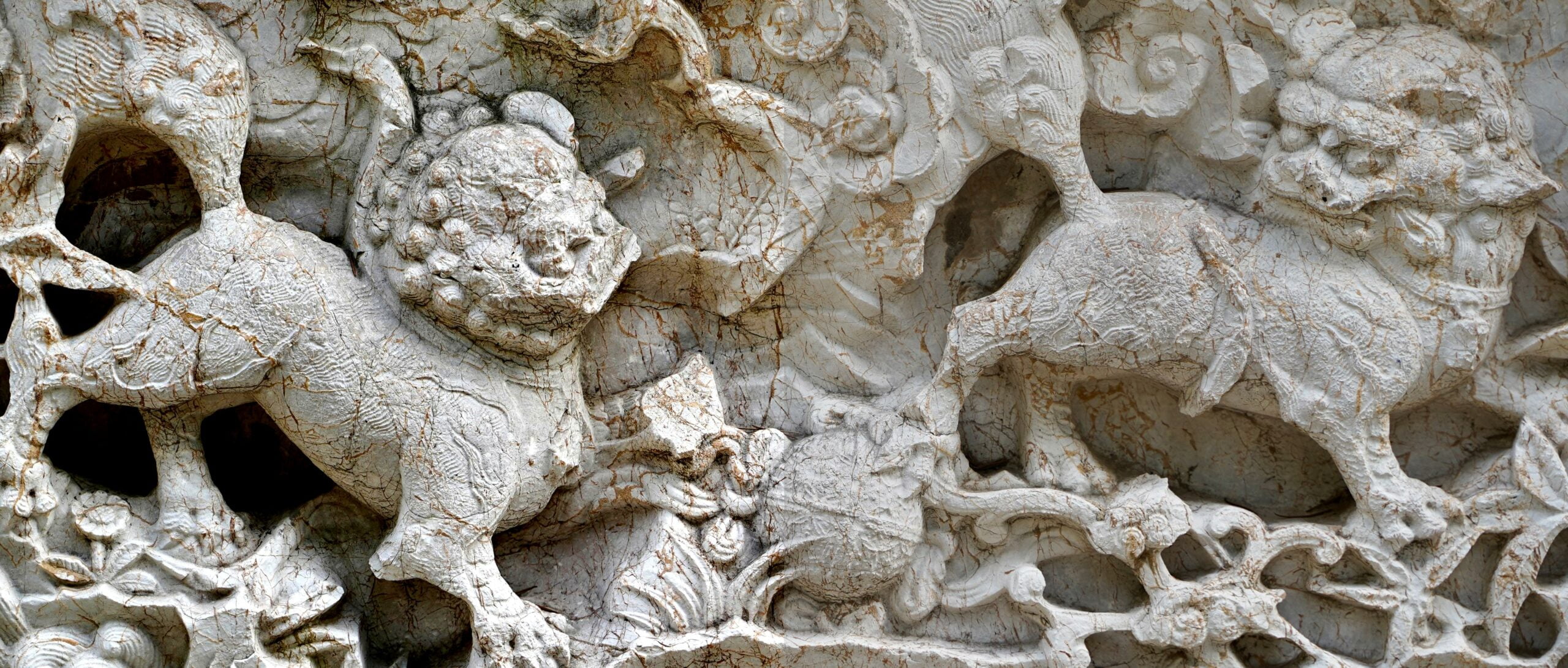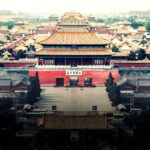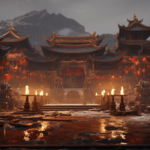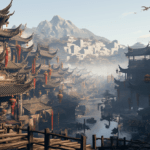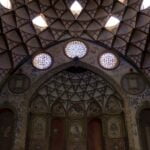Welcome to the mesmerizing world of the Han Dynasty’s artistic treasures, where storytelling meets breathtaking craftsmanship. In this article, we embark on an exhilarating journey through time, unravelling the secrets of the Golden Age. Prepare to be captivated as we explore the majestic art forms that flourished during this remarkable era, from intricate jade carvings to exquisite bronze works and delicate pottery. Join me as we delve into the rich tapestry of Han Dynasty art, uncovering its hidden stories and symbolic significance. Get ready to be enchanted by the artistry of a bygone era that continues to inspire and amaze.
Han Dynasty Golden Age Art
The Han Dynasty stands as a magnificent golden age in Chinese history, characterized by remarkable achievements in various fields. In the realm of art, this period is particularly captivating, as it witnessed the flourishing of creativity, innovation, and artistic expression. Understanding the art of the Han Dynasty allows us to unlock the stories and symbolism encapsulated within these visually captivating artworks.
Everyday Life and Mythology: A Visual Tapestry
The art of the Han Dynasty reflected a deep desire to represent both everyday life and stories from history and mythology. Through mediums such as calligraphy, painting, sculpture, and minor arts, artists skillfully portrayed the vibrant and diverse aspects of Han society. The development of paper, brushes, and inks also played a pivotal role, contributing to a boom in writing and the need for illustrations. Paintings adorned the walls of palaces, homes, and tombs, revealing a glimpse into the lives of the Han people.
“By conveying scenes from daily life, Han Dynasty art acts as a time capsule, preserving the essence of one of China’s most beloved eras.”
Sculptures as Connections to the Past
Sculptures held significant importance during the Han Dynasty, particularly in tombs. Relief scenes on stone, as well as stamped and carved bricks, became common features that conveyed the beliefs, values, and aspirations of the people. These sculptural masterpieces provided a tangible link to the past and served as a means of collecting and representing the diverse cultures, belief systems, and myths within the empire. They allowed the Han people to create a visual narrative of their history and identity.
“Han Dynasty sculptures serve as visual storytellers, revealing the depths of a civilization’s past in a tangible and awe-inspiring manner.”
The Rise of Painting: A New Medium
With the increase in paper use and the availability of books, paintings saw a significant rise in popularity during the Han Dynasty. Artists embraced this fresh medium and used it to express their creativity and imagination. Utilizing ink and color, they skillfully depicted landscapes, portraits, and narratives, enlightening viewers about the beauty and diversity of the world. These paintings were not only admired for their aesthetic appeal but also for their ability to evoke emotion and provoke thought.
“Han Dynasty paintings are visual symphonies, where every brushstroke harmonizes to create a vivid depiction of life, nature, and the human condition.”
A Pottery Revolution: From Functionality to Artistry
The Han Dynasty witnessed groundbreaking developments in pottery and ceramics. Innovations in techniques and kilns allowed for higher firing temperatures, resulting in the production of exquisitely glazed pottery. From functional vessels to intricate figurines, pottery became a powerful medium for artistic expression. Each piece showcased the incredible craftsmanship and attention to detail of Han artisans. They were not mere objects; rather, they symbolized the artistic prowess and cultural richness of the Han civilization.
“Through their delicate forms and exquisite glazes, Han Dynasty pottery adds an artistic dimension to the everyday objects of life, transforming them into works of enduring beauty.”
As we explore the golden age of Han Dynasty art, we unveil a world where artistic treasures capture the essence of a remarkable period in Chinese history. They reflect the complexity, elegance, and vibrancy of a civilization that left an indelible mark on Chinese culture. From sculptures that connect us to the past to paintings that tell stories and pottery that marries functionality with artistry, Han Dynasty art is an unrivaled testament to human creativity throughout the ages.
So come, journey with us in unraveling the golden age and experience the mesmerizing artistic wonders of the Han Dynasty.
“Unveiling the Golden Age of Han Dynasty art is like unlocking a treasury of masterpieces that tell tales of a civilization’s triumphs, struggles, and dreams.”
The Han Dynasty, often referred to as the “Golden Age” of China, holds a wealth of fascinating history waiting to be unearthed. From its remarkable advancements in science and technology to its influential political structure, the era is a treasure trove of knowledge. Delve into the captivating world of the Han Dynasty Golden Age by clicking here: han dynasty golden age. Let your sense of curiosity guide you as you discover the secrets of an empire that shaped the course of a nation.
Han Dynasty Art: Depicting Everyday Life and Mythological Stories
[youtube v=”Rtwu-pRBOfA”]
Han Dynasty: A Glimpse into Chinese Art History
In Chinese art history, the flow of time is organized by the sequence of dynasties. The Han Dynasty stands out as a significant period that left a lasting impact on Chinese cultural identity. This dynasty ruled over China for 400 years, comparable in power to ancient Rome. Han Dynasty art introduced artwork that directly expressed Confucian and Taoist ideals, paving the way for cultural consolidation and invention.
Evolution of Han Dynasty Art
Han Dynasty art encompassed various mediums, including calligraphy, painting, sculpture, and minor arts. Sculptures, particularly those found in tombs, played a crucial role in conveying beliefs, values, and aspirations. These sculptures reflected everyday life and depicted stories from history and mythology.
Embracing the Brushstroke: The Rise of Painting
One intriguing aspect of Han Dynasty art is the emergence of painting as a prominent form of artistic expression. Selected artworks from the Han Dynasty exemplify this shift, such as paintings on silk. Despite the scarcity of surviving early paintings on silk, this medium became the most ambitious form of art in China in the coming centuries.
Exploring the Realm of Life and Death
Han Dynasty art had a close association with death and the afterlife. Complex rituals accompanied the creation of artworks, which were not merely meant to be admired but held magical powers. Banners carried in religious processions, bronze incense burners, and elaborate jade suits for the deceased revealed the significance of these artistic creations in tomb rituals.
From Mythical Realms to Court Life
A turning point in Han Dynasty art was the shift from a mythocentric outlook to an increasing focus on court life. While mythical figures continued to be depicted, there was also a portrayal of the splendid life at the court. Paintings began to reflect confucianist values and rituals, offering insight into the way of life during this period.
Silk, Ceramics, and Trade
The cultural significance of the Han Dynasty expanded beyond its artistic achievements. Economically, the dynasty gained control over territories and outposts in Central Asia, fortifying the Silk Road. Silk, bamboo, lacquerware, and ceramics became highly coveted and were extensively traded, often with the Roman Empire. Notably, China’s dominance led to the establishment of colonies in Korea, shaping the relationship between these two regions for centuries.
Symbolism in Materials: The Meaning of Jade
Materials used in Han Dynasty art were not chosen at random; they carried symbolic meanings. Jade, in particular, held great significance. Renowned for its beauty, jade represented the noble character in a confucianist sense. It mirrored virtues such as charity, rectitude, wisdom, courage, and equity. Jade, along with other materials, infused artworks with deeper philosophical ideas rooted in Taoism and Confucianism.
By exploring the art of the Han Dynasty, we gain invaluable insights into the aesthetics, beliefs, and cultural richness of ancient China. Through their artistic expressions, the Han Dynasty left an indelible mark on Chinese art history.
“The Han Dynasty introduces art that directly expresses Confucian and Taoist ideals, marking a shift in cultural consolidation and invention.”
FAQ
Q: What is the significance of the Han Dynasty in Chinese history?
A: The Han Dynasty is considered a golden age in Chinese history and greatly influenced Chinese civilization.
Q: What forms of artistic expression were prominent during the Han Dynasty?
A: Calligraphy, painting, sculpture, and minor arts such as jade carvings, bronze works, and pottery were important forms of artistic expression during the Han Dynasty.
Q: How did developments in paper, brushes, and inks impact art during the Han Dynasty?
A: Developments in paper, brushes, and inks led to a boom in writing and the need for illustrations, contributing to the rise in paintings during the Han Dynasty.
Q: What advancements were made in pottery during the Han Dynasty?
A: Developments in techniques and kilns led to higher firing temperatures and the production of glazed pottery, which became notable forms of artistic expression during the Han Dynasty.
Q: How did the art of the Han Dynasty reflect the diverse cultures within the empire?
A: The art of the Han Dynasty played a role in collecting and representing the diverse cultures, belief systems, and myths within the empire.
- Beyond the Beat: Unveiling Interesting Dance Facts from Around the World - July 26, 2024
- Unlocking Fleet Efficiency: Captivating Facts About FleetFinder - July 26, 2024
- Peel Back the Facts: The Unexpected Wonders of Banana Cleaner - July 26, 2024
